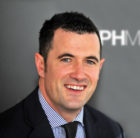
A strong brand image is high on the agenda for most dental practices. Forward-thinking practitioners know how an out-of-date website or a poor email newsletter can paint the wrong picture of a brand in a matter of seconds.
But building a brand isn’t just about how a company looks. How a dental practice sounds to patients can be just as impactful as how it looks.
Hanging on the telephone
The telephone remains one of the largest determining factors in shaping perceptions of a company. Whether it is an existing client ringing to make an appointment or a potential customer enquiring about cosmetic dentistry, inbound calls are key to a practice’s success.
As the old adage goes, you never get a second chance to make a first impression. If the employee answering the phone sounds uninterested or unprofessional, it could put the company’s reputation on the line.
Being left on hold for a significant amount of time without any attempts made to engage or entertain can also be damaging.
Putting callers on hold is an unavoidable necessity for dental practices. But this doesn’t mean generic sounds, such as repetitive beeps, anodyne panpipes or confusing silence, should be used as a placeholder.
A piece of commercial music shouldn’t be used either. People involuntarily attach feelings to a popular song, so how the listener will react can’t be predicted. Some may love the track, while for others, it may elicit painful or negative memories.
Research by PHMG found Canadian businesses leave customers on hold for an average of 26.26 seconds per call yet this doesn’t have to viewed as an inconvenience. Instead, dentists should look to create a positive experience that prevents callers from switching off.
Sound of success
On-hold marketing helps to improve caller retention, engaging and entertaining callers through bespoke voice and music messages that are played whenever customers are put on hold, transferred or call outside of practice hours.
They replace the ‘dead air’ created by hold time with an upselling and cross-selling opportunity. For example, the content could advertise the practice’s in-house orthodontic service, their specialist Botox treatment for Bruxism or a promotional offer on cosmetic treatments.
The messages could also be used to build trust. As many people have a fear of going to the dentist, a firm could promote the methods available for nervous patients or even share testimonials, accreditations and awards to help reassure customers that they are in safe hands.
In our experience, oral health businesses overwhelmingly choose female voiceovers, generally in the 30-50 age range, with a relaxed and reassuring tone.
Music chosen for the brand soundtrack varies between electronic or acoustic instrumentation, or often a mixture of both – but always has a measured, calm tempo and a reasonably minimal arrangement.
Sitting target
Callers are 100% in-market for dental products and services so the telephone represents a golden – but often untapped – opportunity to market to a 100% engaged and in-need audience.
About The Author
 Mark Williamson, is CEO of PHMG, a leading audio branding agency with more than 32,000 clients in 39 countries. He has been with the company since 2004, working with clients across the globe to develop their unique sound strategy.
Mark Williamson, is CEO of PHMG, a leading audio branding agency with more than 32,000 clients in 39 countries. He has been with the company since 2004, working with clients across the globe to develop their unique sound strategy.
RELATED ARTICLE: The Difference Between Dental Branding and Marketing and Why It Matters (a lot)










